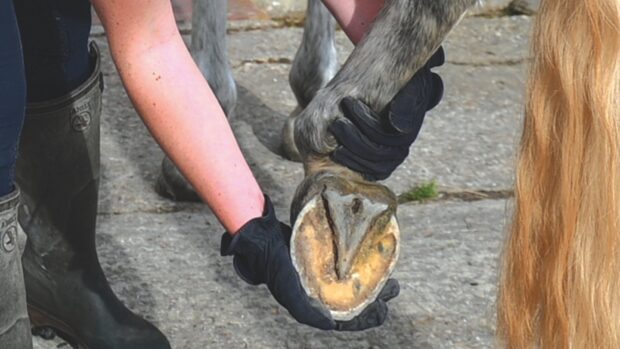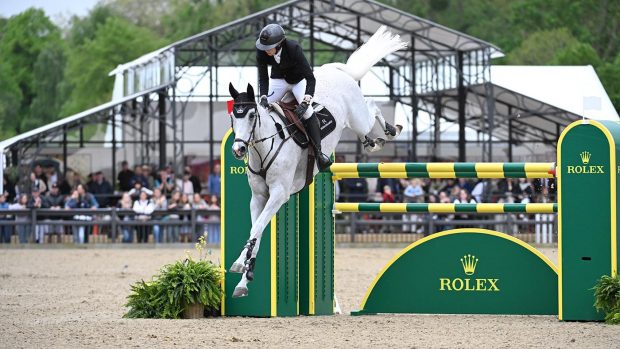Hoof imbalance is one of the most common problems associated with lameness in a horse’s foot. It can be attributed to a variety of causes including conformation, the type of shoes fitted and how regularly the horse is shod.
Ideally, the horse’s foot should strike the ground as a unit, with the entire weight-bearing surface hitting the ground together. In the case of side-to-side imbalance (lateral-medial imbalance) the outside toe strikes the ground before the heel, with the inside heel landing last. This leads to uneven forces across the hoof and uneven loading of the lower limb joints.
Many horses tolerate a large degree of foot balance, remain sound and are able to compete to a high level. Others are more sensitive, with a minimal discrepancy adversely affecting performance.
Evaluating hoof balance is an acquired skill that demands practice and careful observation of the horse standing still (static) and in motion (dynamic). The static evaluation looks at the view from the back (palmar), the bottom (solar) and the front (dorsal) of the foot, while dynamic evaluation is undertaken by watching the horse walk and trot towards and away from the observer.
Correcting any imbalance commonly takes three to five shoeing sessions, although a horse with poor, particularly toe-out, conformation may make complete correction impossible. In such cases the vet and farrier must strive to achieve the best possible balance for that individual, while accepting that achieving ideal balance may cause more harm than good.
In general, correction of the imbalance requires differential trimming of the hoof walls, with or without adjustments to the thickness of the branch of the shoe. Initially the hoof wall on the high side should be removed with little or no trimming on the lower side. The amount of adjustment achieved will be limited by the amount of hoof wall that can be removed without making the horse lame.
A further dynamic evaluation of the hoof should be undertaken and if balance has been achieved, a normal shoe can be applied.
For those feet in which lateral-medial balance cannot be corrected due to conformation or limitations of hoof wall growth, the shoe can be altered to help improve balance.
In many cases, the lateral branch of the shoe can be thinned to lower the outside wall relative to the inside wall. A more extreme measure is to place a plastic wedge under the inside branch of the shoe to elevate the inside wall relative to the outside wall.
Achieving ideal lateral-medial foot balance in a horse with good conformation is not difficult, although even horses with good foot conformation still need careful assessment at the time of shoeing to ensure the foot strikes the ground flat.
Horses with conformation problems will require careful attention to their foot balance throughout their lives, to ensure optimum comfort and performance.



